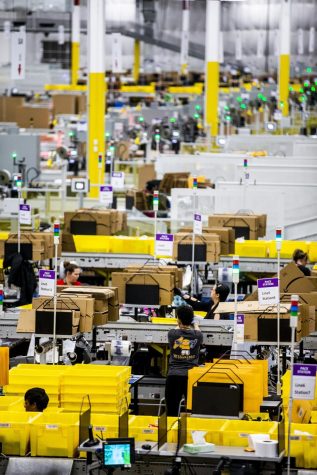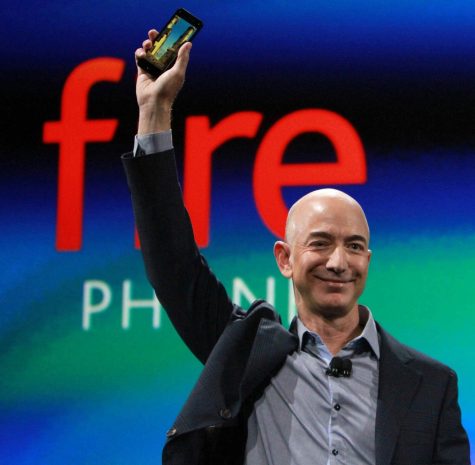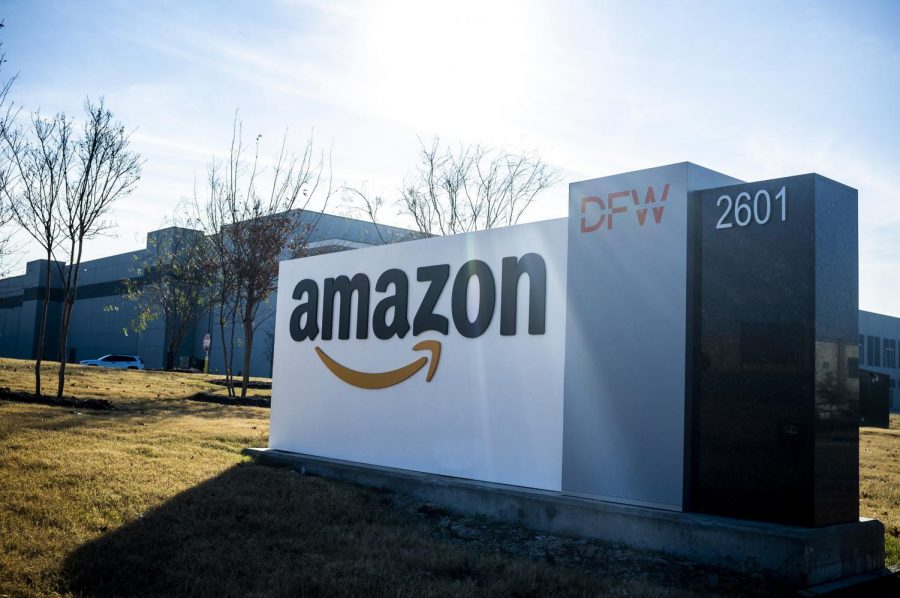It’s the day before Christmas, and suddenly, you realize you forgot to buy your mom a gift! Frantically, you pick up your phone, open the Amazon app, and scroll through hundreds of products: shampoos, bikes, jewelry, books and more. You end up picking a book, which is much cheaper on Amazon than at Barnes and Noble. With all of your Amazon Prime information already saved, all you have to do is click Order Now. At checkout, you select the one-day shipping option, which is free on many products for Prime members. By the next day, an Amazon truck delivers the book and places it at your doorstep. You breathe a sigh of relief, as Amazon has once again saved you from catastrophe.
 But, Amazon’s convenience comes at a cost.
But, Amazon’s convenience comes at a cost.
Amazon’s Fulfillment Centers are where customers’ orders are packaged and “brought to life.” They are hundreds of thousands of square feet, housing millions of products. The warehouses are jungle gyms, with metal slides and ramps transporting the products. A blend of robots and employees help to ensure production runs smoothly.
However, the perfectly timed laborers and intricate systems reveal the unrealistic expectations that employees face. The actual employees are held to standards that would only be reasonable for their robotic counterparts. They are given quotas to fill, with only seconds to scan, pick, or pack an item. Employees’ scan rates are tracked and analyzed, with their statistics being sent to managers. If an employee doesn’t hit their quotas or target speeds, a manager could write them up. Three “write-ups” lead to a firing. Amazon continually claims that their priority is safety, but employees argue that their only concern is speed. Their need-for-speed mentality greatly jeopardizes worker’s rights.
Amazon employees work 12 hour days, with only two 15 minute breaks and a 30 minute lunch. Considering the magnitude of the fulfillment centers, it takes workers nearly half of their lunch to walk to the bathroom and back. In 2018, investigator James Bloodworth discovered that workers were peeing in bottles, as the walk to the bathroom was more than a quarter of a mile. They feared being punished for wasting time, and therefore losing their jobs. Former workers echo Bloodworth’s concerns and add that managers limit the number of bathroom breaks they can take.
In addition to limiting workers’ basic rights, worker safety remains low on Amazon’s priority list. In 2018, 11 out of every 100 Amazon workers sustained serious injuries, meaning they required time off or medical attention. This rate makes labor at an Amazon fulfillment center twice as dangerous as average warehouse work. Additionally, the weeks between Black Friday and Christmas are Amazon’s busiest time of the year, and subsequently the worst for worker injuries. Injury rates peak at more than double the company average the two weeks prior to Christmas. Despite the increased injury rate, most Amazon employees don’t receive health insurance or paid time off because they are part-time or seasonal workers.
 On November 25, over 100 workers and other supporters protested dangerous work conditions and injury rates outside of the Staten Island Amazon facility. A similar protest occurred weeks later, when more than 30 workers at a Sacramento fulfillment center walked out, protesting the lack of paid time off. The protest illustrates the growing frustration of Amazon’s workers towards the policy-setters, as the pay gap between these two classes of employees continues to expand.
On November 25, over 100 workers and other supporters protested dangerous work conditions and injury rates outside of the Staten Island Amazon facility. A similar protest occurred weeks later, when more than 30 workers at a Sacramento fulfillment center walked out, protesting the lack of paid time off. The protest illustrates the growing frustration of Amazon’s workers towards the policy-setters, as the pay gap between these two classes of employees continues to expand.
In 2018, Amazon’s median pay was $28,446, according to company records. This annual salary accounts to about $13.68 an hour. In comparison, Jeff Bezos, Amazon’s CEO and the World’s Richest Man, has a net worth of 116.2 billion dollars. According to estimates, Bezos makes approximately $150,000 a minute, more than 15 times the average Amazon worker makes in a year.
Despite all of the criticism facing Amazon, even some of its toughest adversaries turn to the online website to buy products. After all, Amazon is cheaper, has a larger variety of products, and is much more convenient than most brick-and-mortar stores. As consumers are confronted with the startling truths behind their online orders, they are faced with a difficult decision.
Will they choose morality or convenience?


 But, Amazon’s convenience comes at a cost.
But, Amazon’s convenience comes at a cost. On November 25, over 100 workers and other supporters protested dangerous work conditions and injury rates outside of the Staten Island Amazon facility. A similar protest occurred weeks later, when more than 30 workers at a Sacramento fulfillment center walked out, protesting the lack of paid time off. The protest illustrates the growing frustration of Amazon’s workers towards the policy-setters, as the pay gap between these two classes of employees continues to expand.
On November 25, over 100 workers and other supporters protested dangerous work conditions and injury rates outside of the Staten Island Amazon facility. A similar protest occurred weeks later, when more than 30 workers at a Sacramento fulfillment center walked out, protesting the lack of paid time off. The protest illustrates the growing frustration of Amazon’s workers towards the policy-setters, as the pay gap between these two classes of employees continues to expand.
Grey Smith • Mar 24, 2021 at 5:59 am
I was a big fan of Amazon, but it blew when I hear about this, which I explained. I think Amazon does not play a justified role in worker affairs. Amazon representatives work 12 hour days, with just two brief breaks and a short lunch. Considering the satisfaction habitats’ size, it takes labourers almost 50% of their lunch to stroll to the washroom and back. In 2018, agent James Bloodworth found that specialists were peeing in bottles as they walk to the bathroom was more than a fourth of a mile. They dreaded being rebuffed for sitting around idly, and along these lines losing their positions. Previous specialists reverberation Bloodworth’s interests and add that supervisors limit the number of restroom breaks they can take.
Amazon should think over this, and it should give fundamental rights to its workers. http://www.div-ent.com/it is totally against about this.